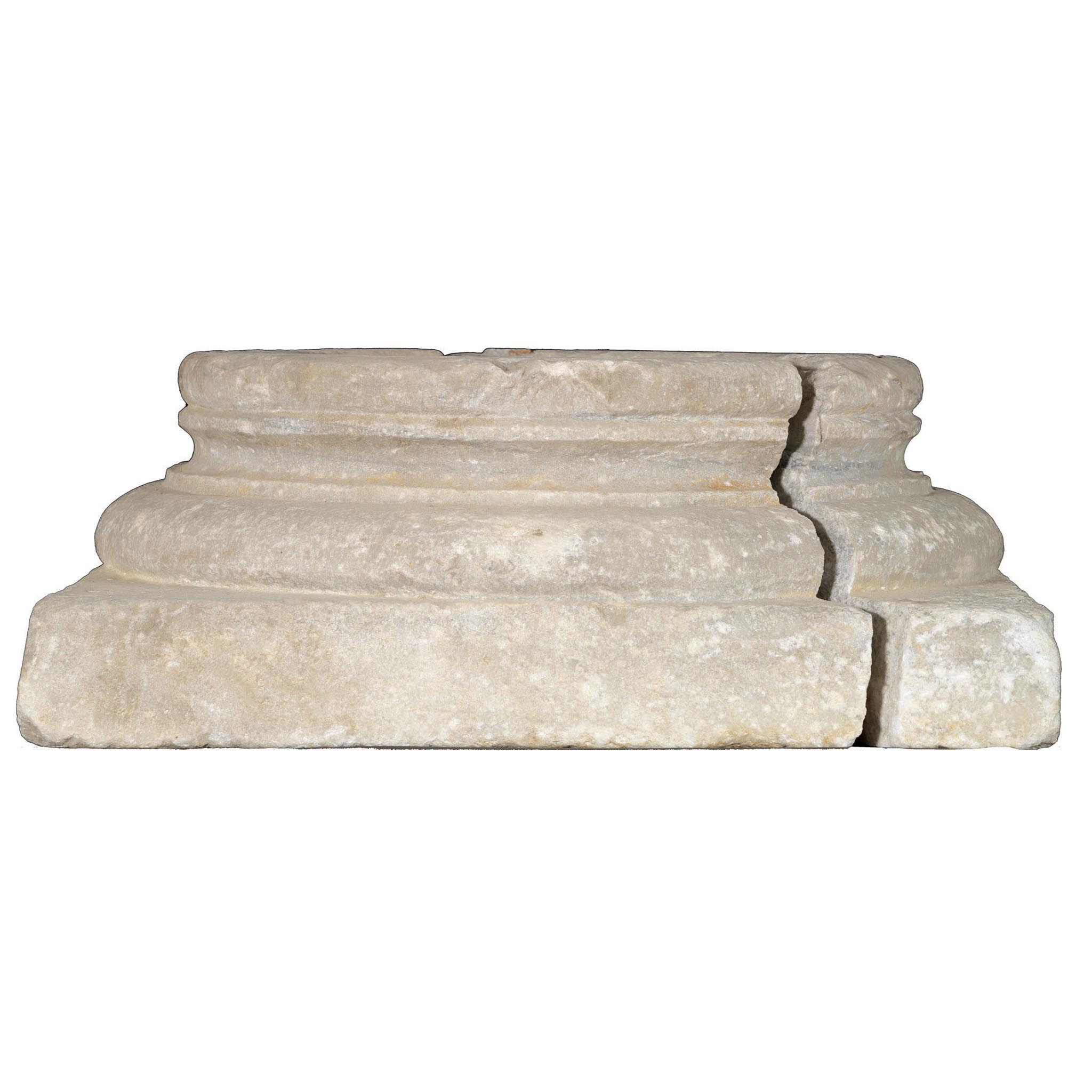The limited locally available resources of the Maltese Islands, and their huge dependency on Sicily, were always an issue to any power governing the islands. However, the islands’ natural harbours and the inhabitants’ knowledge of the workmanship of local materials, were considered a potential on which to generate an economy.
The Ancient powers that dominated the Mediterranean imported to the island marble and other material which were not available on Malta. Therefore, economic availability of sculpted material and its repurposing was important. The Roman base column converted into a well opening, showcases the recycling behaviour during Medieval times in Malta, to sustain the replenishment of water to its user.
During the rule of the Knights of the Order of St John (1530-1798) Malta was transformed to a pride of military engineering, focused around the Grand Harbour. One could only imagine the monumentalisation of the Valletta waterfront, with the Amati Column, along with the fishmarket on the shoreline embellished by a fountain and a bronze statue of Neptune, a cannon carved in marble as a waterspout to replenish water to ships, and Grandmaster’s Jean Paul Lascaris’ (1636-57) Belvedere, which could only mean a symbol of wealth, power, and sustainability.







